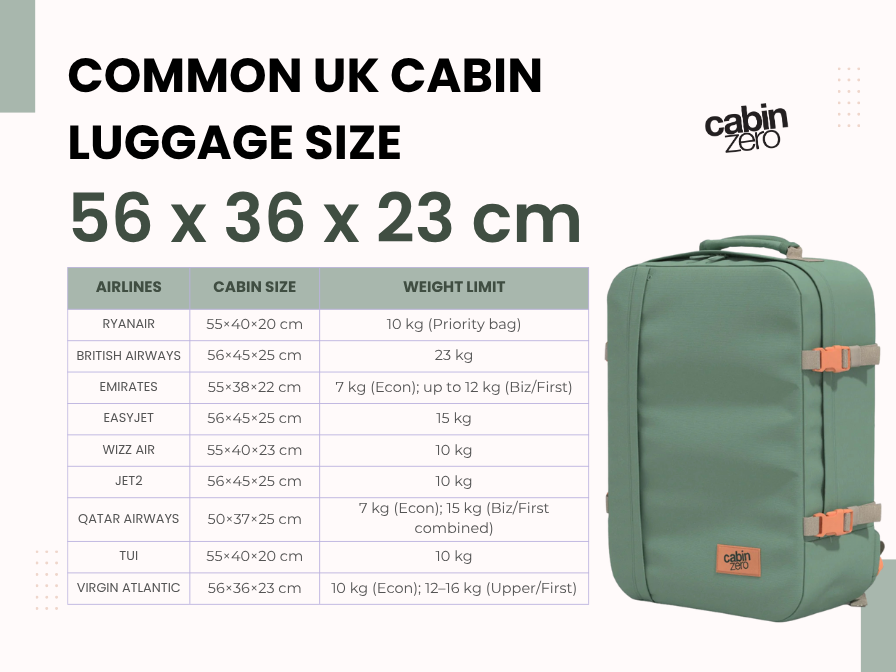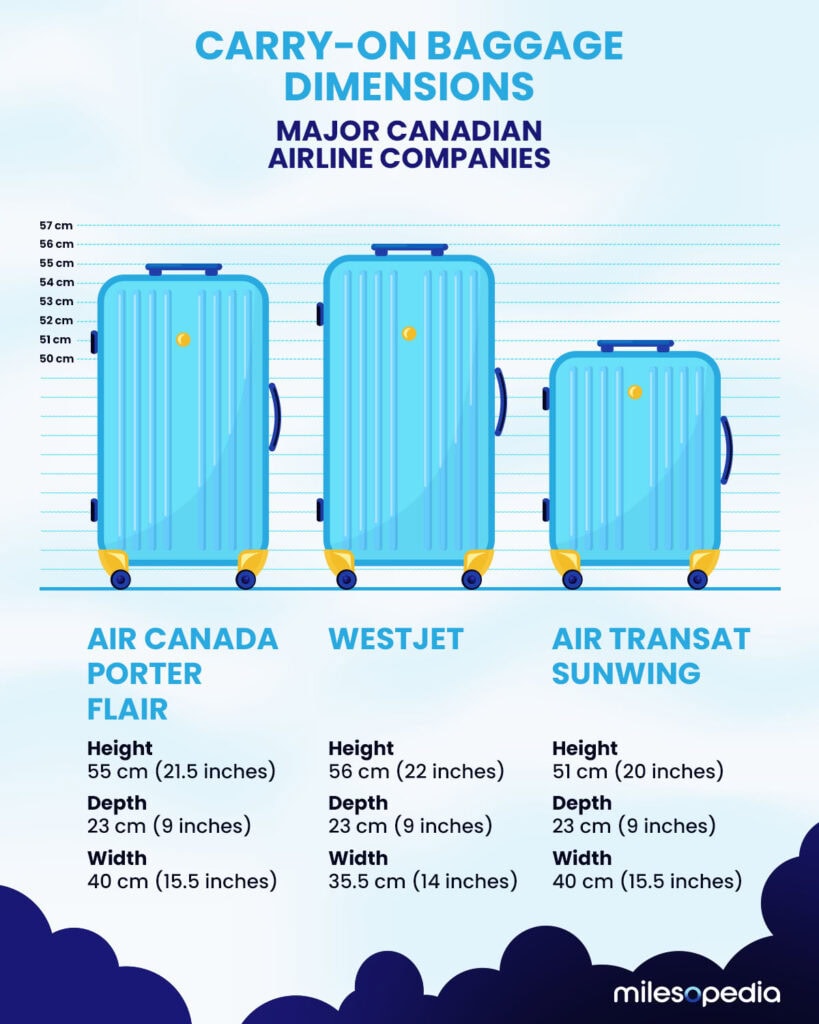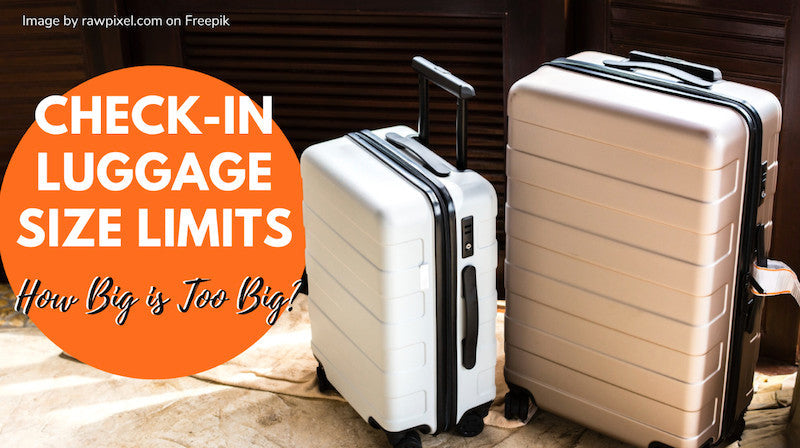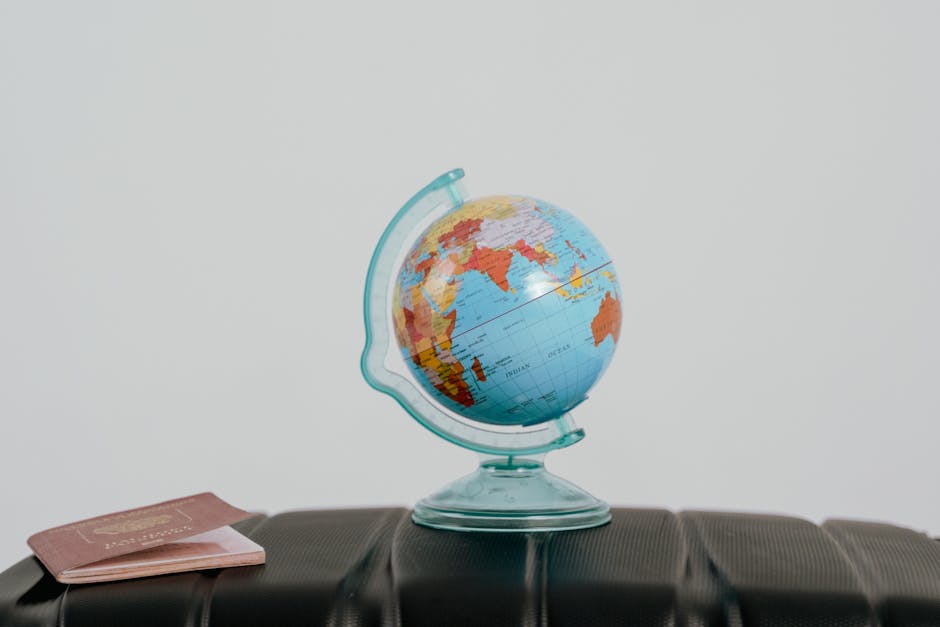Are you planning your next big adventure and wondering, “What size suitcase can I check on a plane?” You’re not alone.
Navigating airline luggage rules can feel like decoding a secret language. But here’s the good news: getting it right could mean avoiding those dreaded extra fees and ensuring a smoother travel experience. Imagine the peace of mind knowing your suitcase fits perfectly within the airline’s limits.
We’ll simplify the rules, give you practical tips, and help you choose the perfect suitcase size. Stick around to make your packing stress-free and your travel more enjoyable.

Credit: es.cabinzero.com
Checked Baggage Size Limits
Understanding checked baggage size limits is crucial before you head to the airport. These limits impact not only the size of the suitcase you can bring but also any additional fees you might face. Knowing what fits within the airline’s rules can save you time, money, and stress during your trip.
Standard Dimensions For Checked Bags
Most airlines set a maximum checked bag size of 62 linear inches. This measurement adds together the length, width, and height of your suitcase. For example, a bag that is 27 inches tall, 20 inches wide, and 15 inches deep equals 62 linear inches.
Weight limits usually accompany these size restrictions, often around 50 pounds. Carrying a bag larger or heavier than allowed can lead to extra charges, so it’s wise to measure and weigh your luggage before packing. Have you ever faced an unexpected baggage fee? It often happens when the suitcase doesn’t meet these standards.
Variations By Airline
Each airline may have slightly different baggage size policies. Some budget airlines enforce stricter limits, while major carriers might offer more flexibility. For instance, Southwest Airlines allows checked bags up to the standard 62 linear inches, but Spirit Airlines may have tighter rules.
Always check your airline’s website before you pack. This step helps you avoid surprises at check-in. Have you noticed how some airlines charge more for oversized bags? Knowing their exact limits lets you decide if it’s better to upgrade your ticket or ship items separately.
International Vs Domestic Flights
International flights often have different baggage size and weight restrictions than domestic ones. Airlines might allow larger or heavier bags for international travel due to longer trip durations. For example, Emirates permits checked bags up to 32 kg (about 70 pounds) on many international routes, which is heavier than typical domestic limits.
However, these rules can vary widely depending on the country and airline. If you’re flying internationally, double-check both your departing and returning airline’s baggage policies. Have you ever packed differently for a domestic versus an international trip? This difference can make a significant impact on your packing strategy.
Weight Restrictions And Fees
Understanding weight restrictions and fees is key for smooth air travel. Airlines set rules on how much your checked suitcase can weigh. Exceeding these limits can lead to extra charges. These fees can be costly and disrupt travel plans.
Knowing the common weight limits and fee structures helps avoid surprises. Simple packing strategies reduce the risk of overweight bags. Saving money and time at the airport starts with smart luggage choices.
Common Weight Limits
Most airlines allow checked bags weighing up to 50 pounds (23 kilograms). Some international flights may permit up to 70 pounds (32 kilograms). Airlines often have different rules for economy and business class passengers.
- Standard economy class: 50 pounds (23 kg)
- Business/first class: 70 pounds (32 kg)
- Oversized bags may have separate size and weight limits
Overweight Charges Explained
Fees for overweight bags vary by airline and route. Charges usually start when bags exceed the standard weight limit. Prices can increase steeply for heavier bags. Paying these fees at the airport can delay your check-in process.
| Weight Range | Fee Range |
|---|---|
| 51-70 pounds (24-32 kg) | $50 – $100 |
| Over 70 pounds (32 kg) | $100 – $200+ |
Tips To Avoid Extra Fees
- Weigh your suitcase before leaving home
- Pack only essentials and avoid overpacking
- Use lightweight luggage to maximize weight allowance
- Distribute weight evenly across bags if traveling with more than one
- Check airline rules online before packing
Choosing The Right Suitcase Size
Choosing the right suitcase size is key to a smooth travel experience. Your choice affects packing ease, airline fees, and comfort during transit. A well-sized suitcase fits airline rules and meets your trip needs.
Consider how long your trip will last and what you plan to carry. Balance between enough space and manageable weight. Suitcase sizes vary to suit different travel styles and durations.
Small Suitcases
Small suitcases usually measure under 22 inches. They are ideal for short trips or weekend getaways. These suitcases fit in overhead bins and often avoid checked baggage fees.
They hold essentials like clothes, toiletries, and small electronics. Packing light helps move quickly through airports. Small suitcases limit what you can bring but keep travel simple.
Medium Suitcases
Medium suitcases range from 23 to 26 inches. They work well for trips lasting several days to a week. These suitcases offer more space without being too heavy or bulky.
They fit most airline checked baggage rules. Medium size suits travelers who need more clothing or gear. Organizers and packing cubes help make the most of the space.
Large Suitcases
Large suitcases measure 27 inches or more. They are best for long trips or family vacations. These suitcases hold bulky items like coats, shoes, and extra clothes.
Check airline weight limits to avoid fees. Large suitcases can be heavy and harder to carry. Use sturdy wheels and handles to ease transport.
Capacity And Packing Tips
- Roll clothes to save space and reduce wrinkles.
- Use packing cubes to organize items by type.
- Place heavy items at the bottom for balance.
- Fill shoes with small items like socks or chargers.
- Keep important documents and valuables in a carry-on.
Suitcase Materials And Durability
Suitcases come in hard-shell and soft-shell types. Hard-shell cases protect fragile items better. They resist water and impacts well.
Soft-shell suitcases are lighter and flexible. They often have extra pockets for organization. Choose materials like polycarbonate or ballistic nylon for strength.
Check zippers, handles, and wheels for quality. Durable suitcases last longer and handle travel wear. Pick a suitcase that matches your travel style and frequency.
Special Airline Policies
Special airline policies affect the size and weight of checked suitcases. Each airline sets its own rules based on service type and route. Knowing these rules helps avoid fees and delays at the airport.
Policies differ between low-cost carriers, premium airlines, and regional or budget airlines. Each category has unique limits and fees that travelers must understand.
Low-cost Carriers
Low-cost carriers often charge extra for checked bags. They usually allow smaller suitcase sizes to avoid fees. Weight limits tend to be strict, commonly around 20-23 kg (44-50 lbs).
Fees increase quickly for overweight or oversized bags. Travelers should measure and weigh their luggage before the flight. Some low-cost airlines have strict size limits, like 55 x 40 x 20 cm.
Premium Airlines
Premium airlines offer larger size limits for checked suitcases. They often include at least one free checked bag with the ticket. Size limits usually reach up to 158 cm total (length + width + height).
Weight limits range from 23 to 32 kg (50 to 70 lbs). Business and first-class passengers get higher allowances. These airlines provide more flexibility and fewer extra fees.
Regional And Budget Airlines
Regional and budget airlines have varied suitcase rules. Some allow only small checked bags due to plane size. Others may charge for every checked bag regardless of size.
Weight limits can be lower than larger airlines, often under 20 kg. Suitcase dimensions might be smaller to fit in compact cargo space. Checking specific airline policies before packing is essential.
Packing Strategies For Checked Bags
Packing your checked bag efficiently can make a huge difference in your travel experience. It’s not just about fitting everything in; it’s about making sure your items stay safe and easy to access. Let’s look at some smart strategies to help you pack better and travel lighter.
Maximizing Space
Use every inch of your suitcase wisely. Rolling clothes instead of folding can save space and reduce wrinkles. Place heavier items at the bottom near the wheels to keep your suitcase balanced.
Think about layering smaller items inside shoes or filling gaps with socks and accessories. Compression bags can also help shrink bulky items like jackets.
Protecting Fragile Items
Fragile items need extra care in checked bags. Wrap them in soft clothes or bubble wrap to cushion against bumps. Place these items in the middle of your suitcase, surrounded by softer clothing for added protection.
Consider using hard-shell suitcases for better impact resistance. Have you ever opened your bag to find broken souvenirs? Taking these steps can save you from that disappointment.
Organizing With Packing Cubes
Packing cubes keep your suitcase tidy and make it easier to find what you need. Sort your clothes by type or day, so you don’t have to unpack everything to find one item. This saves time and keeps your bag organized throughout your trip.
Try labeling cubes or using different colors for various categories. This simple trick helped me avoid a frantic search for clean clothes on a recent trip.
Tips For Smooth Check-in
Checking in your suitcase without hassle saves time and stress at the airport. Small details can make a big difference. Follow simple tips to ensure a smooth check-in experience. Being prepared helps avoid surprises and extra fees. Here are key points to focus on before you leave home.
Measuring Your Suitcase
Check your suitcase size before packing. Use a tape measure to get the length, width, and height. Airlines set size limits for checked bags. Measure the suitcase from edge to edge, including wheels and handles. Compare your measurements to the airline’s rules. A slightly bigger bag might not be allowed. This saves you from repacking or paying extra fees at the airport.
Weighing Your Bag At Home
Weigh your suitcase to avoid overweight charges. Use a luggage scale or a bathroom scale. Weigh the bag after packing, but before leaving. Most airlines have weight limits, usually 50 pounds or 23 kilograms. If your bag is too heavy, remove some items. This prevents last-minute repacking or fees. Weighing your bag early helps keep things simple.
Preparing For Security Checks
Organize your suitcase for easy security screening. Place liquids in a clear, resealable bag. Keep electronics handy for separate screening. Avoid packing prohibited items like sharp objects or large batteries. Follow the airline and airport security rules closely. A well-prepared bag moves faster through security. You save time and avoid delays with clear, simple packing.
Latest Trends In Suitcase Design
Suitcase designs keep evolving, making travel easier and more efficient. The latest trends focus on making luggage smarter, lighter, and more adaptable to your needs. These improvements not only help you pack better but also fit airline size restrictions more comfortably.
Smart Luggage Features
Smart suitcases now come with built-in GPS trackers, so you can locate your bag instantly if it goes missing. Some models include USB charging ports, allowing you to charge devices on the go without opening your suitcase.
Imagine arriving at your destination with a fully charged phone and peace of mind about your luggage’s whereabouts. These features reduce travel stress and help you stay connected.
Lightweight Materials
Manufacturers use advanced materials like polycarbonate and aluminum to cut down on weight without sacrificing durability. A lighter suitcase means you can pack more without worrying about airline weight limits.
Have you ever struggled lifting a heavy bag onto the conveyor? Switching to lightweight luggage can make that process much smoother and less tiring.
Expandable Suitcases
Expandable suitcases give you extra space when you need it, perfect for souvenirs or unexpected purchases. You can compress the bag back to a smaller size for easier storage and compliance with airline size rules.
Consider how often your packing needs change. An expandable suitcase lets you adapt without buying multiple bags or risking extra fees.

Credit: milesopedia.com

Credit: www.cabinzero.com
Frequently Asked Questions
What Is The Maximum Suitcase Size For Checked Baggage?
Most airlines allow checked suitcases up to 62 linear inches (length + width + height). Exceeding this may incur extra fees or require special handling.
How Much Does An Overweight Suitcase Cost On A Plane?
Overweight fees vary by airline but typically range from $50 to $200. Check your airline’s policy before packing to avoid surprises.
Can I Check Multiple Suitcases On A Flight?
Yes, but airlines often charge fees for additional checked bags. Fees and weight limits differ by carrier and ticket class.
Are Carry-on And Checked Suitcase Size Limits Different?
Yes, carry-on bags are smaller, usually max 22 x 14 x 9 inches. Checked bags can be much larger, up to 62 linear inches.
Conclusion
Choosing the right suitcase size helps avoid extra fees and stress. Airlines set limits on checked luggage size and weight. Bigger suitcases may not fit the rules, causing delays or charges. Always check your airline’s baggage policy before packing. Carrying a properly sized suitcase makes travel smoother and easier.
Remember, simple preparation saves time and money at the airport. Plan smart, pack light, and enjoy your trip without worry.




